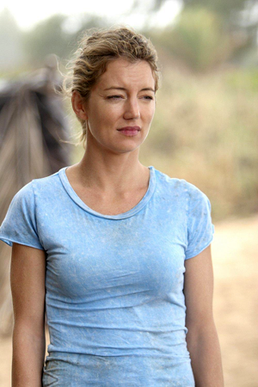
Graffiti is art that is written, painted or drawn on a wall or other surface, usually without permission and within public view. Graffiti ranges from simple written words to elaborate wall paintings, and has existed since ancient times, with examples dating back to ancient Egypt, ancient Greece, and the Roman Empire.

Banksy is a pseudonymous England-based street artist, political activist and film director whose real name and identity remain unconfirmed and the subject of speculation. Active since the 1990s, his satirical street art and subversive epigrams combine dark humour with graffiti executed in a distinctive stenciling technique. His works of political and social commentary have appeared on streets, walls and bridges throughout the world. Banksy's work grew out of the Bristol underground scene, which involved collaborations between artists and musicians. Banksy says that he was inspired by 3D, a graffiti artist and founding member of the musical group Massive Attack.

Weird NJ is a semi-annual magazine that chronicles local legends, purported hauntings, ghost stories, folklore, unusual places or events, and other peculiarities in New Jersey. The magazine originated in 1989 as a newsletter sent to friends by Mark Moran and Mark Sceurman, but as it grew in popularity, it became a public magazine published twice a year. It spawned a series of books called Weird US, which chronicle oddities from individual states in the United States aside from New Jersey, which in turn led to a television series that aired on the History Channel.
William Alexander White is an American neo-Nazi. He was the former leader of the American National Socialist Workers' Party, and former administrator of Overthrow.com, a now-defunct website dedicated to racist and antisemitic content.

William G. Enloe GT/IB Magnet Center for the Humanities, Sciences and the Arts, also known as Enloe Magnet High School or Enloe High School, is a public magnet high school offering Gifted & Talented and International Baccalaureate programs located in eastern Raleigh, North Carolina, United States. It is operated under the Wake County Public School System. The first integrated public high school in the city of Raleigh, it was named after William Gilmore Enloe, the Mayor of Raleigh at the time the school was opened.

Skerik, is an American saxophonist from Seattle, Washington. Performing on the tenor and baritone saxophone, often with electronics and loops, he is a pioneer in a playing style that has been called saxophonics.

The 1920 Revolution Brigades was a Sunni militant group in Iraq, which included former members of the disbanded Iraqi army. It was established by the members of the former Ba'ath army of Saddam Hussein in 2003 following the American invasion. The group had used improvised explosive devices, and armed attacks against U.S.-led Coalition forces. The group comprises the military wing of the Islamic Resistance Movement. The group was named in reference to the Iraqi revolt of 1920.
Paw Tracks was an independent record label based in Washington, D.C.
The Earth Liberation Front (ELF) has taken a variety of criminal actions since 1992. Actions were rarely publicised prior to 1996 and are therefore difficult to find.

OSGEMEOS are identical twin street artists Otavio Pandolfo and Gustavo Pandolfo. They started painting graffiti in 1987 and their work appears on streets and in galleries across the world.

Libby is a fictional character on the ABC drama television series Lost, which chronicles the lives of over forty people after their plane crashes on a remote island somewhere in the South Pacific. She is played by American actress Cynthia Watros. The character is introduced as a member of the tail section survivors in the second season episode "Everybody Hates Hugo", together with Bernard, and she ends her role as a living character in the episode "?".
Classical Christian education is an approach to learning rooted in the long story of Christian engagement with the classical tradition as exemplified first by figures such as the Cappadocian Fathers, Augustine and Jerome as well as the fullness of Christian monastic traditions. Its current revival in American K-12 schools started with three schools founded in 1980 to 1981: Cair Paravel-Latin School, Trinity School at Greenlawn, and Logos School. Various classical Christian schools emphasize and articulate different things in their approaches, but most include biblical teachings and incorporate a teaching model from the classical education renewal known as the Trivium, consisting of three parts: grammar, logic, and rhetoric.
Libby Copeland is a freelance writer in New York City, and was previously a staff writer for the Washington Post. She started her career with the Post in 1998 as an intern in the style department, and went on to cover culture, crime and Washington politics. In 2005, she was the Feature Specialty Reporting winner for the large circulation papers in the American Association of Sunday and Feature Editors' annual competition. In 2009, she left the Post and moved to New York. Since becoming a freelancer, she has become a regular contributor to Slate, and has written for the New York magazine, the Wall Street Journal and Cosmopolitan, among other publications. She has appeared on MSNBC, CNN and NPR.

Michael Donald Brown is an American politician serving as the junior United States shadow senator from the District of Columbia, having served since 2007.

Stephen J. Powers is an American contemporary artist and muralist. He is also known by the name ESPO, and Steve Powers. He lives in New York City.

Graffiti in New York City has had a substantial local, national, and international influence.
Mook is the vandal moniker used by a Pittsburgh, Pennsylvania man Michael Monack and a Portland, Oregon man Marcus Edward Gunther.

MFONE is the graffiti moniker of Daniel Montano. He was an American best known for his graffiti who died on June 10, 2017, from a heroin overdose at the age of 31. He had been using Vicodin, Xanax, cocaine, heroin and marijuana for 15 years. He was active in Pittsburgh in the mid and late 2000s. At the peak of his tagging activity, he was considered to be "the most notorious tagger in [Pittsburgh] history." According to police, he is the most prolific graffiti writer in the city's history. He replaced Mook in local graffiti folklore. His graffiti activities are alleged to have caused up to $713,801 in damage.

Comet Ping Pong is a pizzeria, restaurant, and concert venue located on Connecticut Avenue in Washington, D.C.'s Chevy Chase neighborhood. Owned by James Alefantis, Comet has received critical acclaim from The Washington Post, The Washingtonian, New York magazine, the DCist, and Guy Fieri of Food Network's Diners, Drive-Ins and Dives.

Danielle E. "Utah" Bremner and Jim Clay "Ether" Harper VI are American graffiti artists, called the "Bonnie and Clyde of the graffiti world". They have tagged trains and buildings in over 30 countries on five continents, and have made books and videos about their exploits. They have also been arrested, fined, and served multiple prison sentences for vandalism. Their use of social media has been used as an example in a book about graffiti artists, and they have been the subjects of a video exhibit and a song.
















